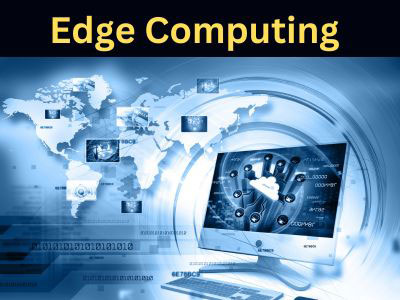Key Takeaway
Amazon Edge Computing consists of services like AWS Greengrass, which process data closer to its source instead of relying solely on the cloud. These services reduce latency and enhance efficiency by allowing real-time analytics and decision-making at the edge.
This approach is particularly beneficial for industries that require low-latency responses, such as healthcare, automotive, and IoT applications. Amazon’s edge solutions provide the flexibility and scalability needed for modern, connected systems.
Overview of Amazon’s Edge Computing Services
Amazon offers a range of services that facilitate edge computing, helping businesses process data closer to where it is generated, thus improving performance and reducing latency. Amazon’s Edge Computing Services are a powerful suite that includes tools for managing edge devices, running applications locally, and integrating with AWS cloud services.
For example, AWS IoT Greengrass allows edge devices to process data locally, enabling faster decision-making and reducing the need for constant communication with the cloud. Similarly, AWS Wavelength brings AWS services to the edge of 5G networks, enabling ultra-low latency applications such as autonomous vehicles and augmented reality.
By using Amazon’s edge computing services, organizations can enhance the efficiency of their operations, improve real-time decision-making, and reduce the dependency on centralized cloud servers. Whether it’s running machine learning models at the edge, optimizing network performance, or reducing data transfer costs, Amazon’s edge services provide a comprehensive solution for businesses looking to harness the power of edge computing.

How Amazon Edge Supports IoT and Cloud Systems
Amazon Edge bridges the gap between IoT and cloud systems by enabling real-time data processing at the edge while maintaining connectivity with AWS cloud services. This hybrid approach allows engineers to balance local processing and centralized management efficiently.
The platform supports advanced analytics, machine learning, and device management at the edge. It also offers robust security features, such as encryption and access control, to protect sensitive data.
For engineers, Amazon Edge simplifies the integration of IoT systems with cloud infrastructure, ensuring optimal performance and scalability. Its seamless connectivity and powerful features make it a preferred choice for edge computing projects.
Key Use Cases of Amazon Edge Computing Solutions
Amazon Edge Computing solutions provide numerous use cases for a variety of industries, making it an essential tool for optimizing IoT and cloud-based operations. Here are some key examples:
1. Smart Cities
In smart cities, Amazon Edge solutions can process data from sensors and cameras in real-time, such as traffic monitoring, waste management, and smart lighting. This allows city services to respond quickly to changing conditions, improving overall efficiency.
2. Industrial IoT (IIoT)
In industrial environments, edge computing helps in predictive maintenance, remote monitoring, and process optimization. By analyzing data at the edge, businesses can detect issues before they cause downtime, saving on maintenance costs and improving production efficiency.
3. Retail
Retailers use Amazon Edge solutions to analyze customer behavior, optimize inventory, and personalize the shopping experience. Real-time processing of data from POS systems and security cameras can provide insights that drive customer engagement and improve operational efficiency.
4. Healthcare
Amazon Edge enables real-time data processing from medical devices and wearables, ensuring immediate access to critical health information. This is crucial for applications such as telemedicine, remote patient monitoring, and emergency response.
Benefits of Amazon Edge in Real-Time Applications
The Amazon Edge services provide a significant boost to real-time applications, particularly in scenarios where immediate data processing is crucial. By enabling data to be processed at the edge of the network, closer to the source of generation, Amazon Edge helps reduce the latency that typically arises from sending data to distant cloud servers for processing.
One of the primary benefits of using Amazon Edge for real-time applications is low-latency decision-making. For example, in autonomous vehicles, real-time sensor data such as images, LIDAR readings, and radar outputs need to be processed with minimal delay to make split-second decisions. With Amazon Edge, this data can be processed locally on the vehicle itself, ensuring that it can respond immediately to any changes in the environment, such as avoiding obstacles or adjusting speed.
In healthcare, real-time patient monitoring becomes more effective with Amazon Edge. Devices that track vital signs, such as heart rate or oxygen levels, can analyze the data locally to detect irregularities and immediately trigger alerts, enabling faster intervention and reducing the time it takes for doctors to respond to emergency situations. Moreover, processing data on the edge reduces the reliance on the cloud, ensuring data privacy and improving security.
Integration of Amazon Edge with Other AWS Services
Amazon Edge services seamlessly integrate with a wide range of AWS services, providing a comprehensive and unified platform for IoT applications. By leveraging the power of AWS Lambda, developers can create serverless edge applications that scale automatically and reduce the need for manual infrastructure management. AWS IoT Core allows businesses to securely connect and manage IoT devices at scale, while Amazon S3 and AWS Glacier provide storage solutions for long-term data retention.
Amazon Edge services also work in harmony with Amazon SageMaker, enabling AI and machine learning at the edge. This allows for real-time predictions and intelligent decision-making at the device level, minimizing latency and improving operational efficiency. Additionally, AWS CloudWatch and AWS X-Ray provide monitoring and debugging tools, ensuring that edge deployments remain efficient and performance-optimized.
Conclusion
In conclusion, Amazon Edge Computing enables users to process data at the edge of the network, reducing latency and improving response times for time-sensitive applications. By moving computing resources closer to end users, Amazon Edge Computing offers faster and more efficient services for IoT, real-time analytics, and content delivery.
As businesses continue to adopt edge computing solutions, Amazon’s robust infrastructure and services will support the growth of edge applications across various industries, from autonomous vehicles to smart cities.
